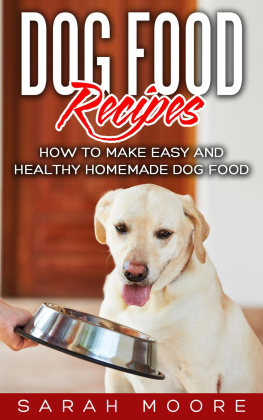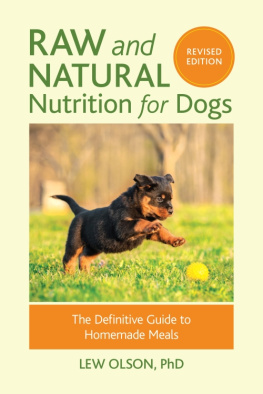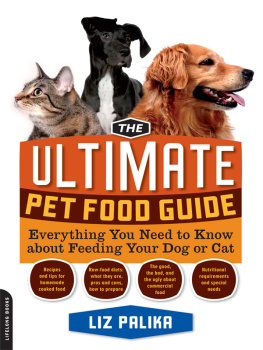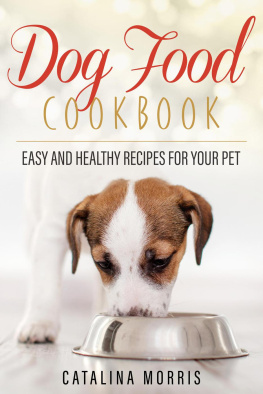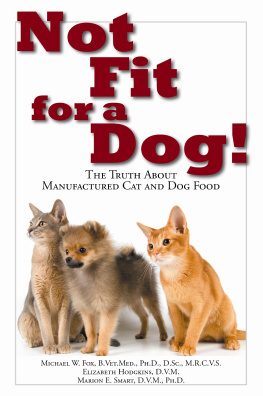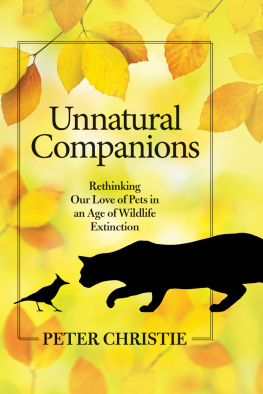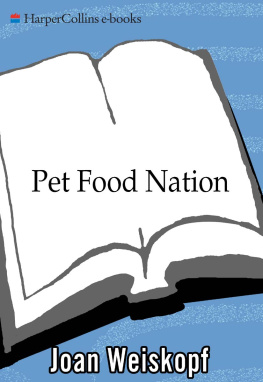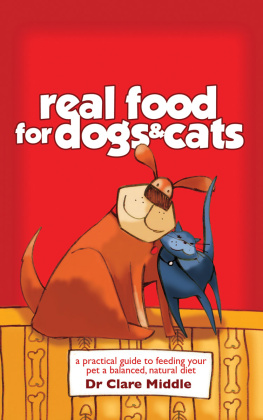

Food Pets Die For
Third Edition
Food Pets Die For:
Shocking Facts About Pet Food
Copyright 2008 Ann N. Martin
Third Edition published 2008 ISBN 978-0939165-56-8
First Edition published 1997 ISBN 0-939165-31-7
Second Edition published 2003 ISBN 0-939165-46-5
All rights reserved. No part of this book may be reproduced or used in any form or by any means without permission in writing from the publisher.
NewSage Press
PO Box 607
Troutdale, OR 97060-0607
503-695-2211
www.newsagepress.com
Cover and Book Design Sherry Wachter
Distributed by Publishers Group West
Note to the Reader: This book is an informational guide. Consult a veterinarian or animal nutritionist if you have concerns about your animal companions diet or health.
Library of Congress Cataloging-in-Publication Data
Martin, Ann N., 1944-
Food pets die for: shocking facts about pet food / by Ann N. Martin; foreword by Shawn Messonier.3rd ed.
p. cm.
Includes bibliographical references and index.
ISBN 0-939165-56-2 (alk. paper)
1. PetsFeeding and feeds. 2. PetsHealth. 3. PetsFeeding and feedsContaminationUnited States. 4. PetsFeeding and feedsContaminationCanada. 5. Pet food industryUnited States. 6. Pet food industryCanada. I. Title.
SF414.M37 2008
63.1929dc22
2008023314
3 4 5 6 7 8 9
Dedicated to the memory of Tracy Ann Smith, 1950-2006.
Tracy was a NewSage Press copy editor extraordinaire, who worked diligently on the first and second editions of this book. Her lifelong love for animals, and her commitment to good books, are entwined in these pages. We will always remember Tracy.
ACKNOWLEDGMENTS
Many individuals helped along the way as I updated and added new information for the third edition. First and foremost I want to acknowledge my publisher and editor, Maureen R. Michelson, who spent untold hours questioning my information, checking facts, and editing the material to make a rough manuscript a readable book. My sincere thank you, Maureen, for all you have done over the years since first publishing my book in 1997.
A special thank you to NewSage Press designer, Sherry Wachter, who made this book attractive and visually inviting.
I am grateful to Shawn Messonnier, D.V.M., Michael Fox, D.V.M., Alfred Plechner, D.V.M., and Martin Zucker for their willingness to support my work with kind words and endorsements. You are all people I admire for your work and your writing. I am humbled. To the many veterinarians and specialists in various fields with whom I have corresponded, you have added immeasurable information, which has provided insight into the various topics covered. Please know that you have played a very important role.
Chuck, my partner, my friend, thank you from the bottom of my heart for being there. Jamie, my son, without your computer knowledge my manuscript would have been lost, numerous times.
Thank you to my sister, Mary, for her remarkable photographs of Kodi, my beautiful Newfoundland. Congratulations for your award-winning photo of Kodi as a baby.
To my extended familyDarlene, Tina, Audrey, Sheila and their familiesyou are all a very important part of my life. My friends, worldwide, who have provided so much information, please know that without your input many questions would have been left unanswered.
Last, but not least, I feel tremendous gratitude for my four-legged family, both past and present, who have been my taste testers for a variety of my home-cooked meals. My current animal companionstwo-year-old Kodi and twenty-two-year-old Simoncontinue to inspire me in my work. I love you all.
A SPECIAL ENDORSEMENT
Every veterinarian should provide copies of this book for their clients, and everyone with a companion dog or cat should not be without it. Good nutrition is a cornerstone for health and disease prevention. Ann Martin documents how this cornerstone has been removed by the commercial pet food industry. They recycle and profit from the by-products of the human food industry, including the diseased and condemned parts of cruelly raised, factory-farmed animals. This practice puts millions of dogs, cats, and other animals, as well as humans at risk.
Food Pets Die For is part of the ongoing revolution in agriculture and the food industry that calls on informed consumers to support a more humane, organic, sustainable, and healthful food production system.
I am honored to again endorse this book in its third edition because Ann Martins investigative writing has helped set the record straight on a multi-billion-dollar pet food industry. With this information we can all act responsibly by making informed choices for the health and well-being of our beloved animal companions.
MICHAEL W. Fox
Veterinarian, Bioethicist, and Author
CONTENTS
Ann N. Martin presents information that is informative, eye-opening, and groundbreaking in exposing the truth behind what is contained in many commercially-produced pet foods. While the information contained in Foods Pets Die For may appear controversial and will likely be dismissed by some, it is well-researched information.
She points out the dangers that are often present in many brands of commercial pet food and encourages you to learn more about just what is contained in that bag or can before you feed it to your pet. In short, Ann Martin presents an answer that at times is not too pleasant to the all-important question I pose: Do you really know what your pet ate last night?
As a practicing holistic veterinarian, I am constantly amazed that diet is often the most neglected part of a pets health care. Its not that most pet owners dont want to feed their pets properly, its just that they think they are doing so simply because they have purchased one of the recommended premium foods advertised or promoted by the pet store clerk or even by their own veterinarians.
I used to believe that simply recommending a premium food was enough. Somehow my limited knowledge of nutrition qualified me to believe that following the advice of a pet food company and then making that food available to my clients ensured they would feed a healthy diet.
When I decided to change my focus of treating disease to healing pets and began incorporating a holistic approach at my practice, I realized that the only thing premium about the diets I had recommended was the price!
By learning all I could about pet nutrition and the pet food industry, I have changed my recommendation. Now I know better. As Ann Martin discusses in this book, the best diet is a homemade one, using the freshest, most wholesome ingredients. Next best is a diet from a company that truly uses wholesome protein, fat, and carbohydrate sources in the diet, without relying on toxic chemicals and preservatives. Either diet choice can be made even better with proper nutritional supplementation.
In my pre-veterinary studies I was an animal science major. One of my favorite classes was meat science, where my classmates and I were taught how to properly process meat for the consumer. I was quite impressed that literally nothing from the slaughtered animal carcass was ever wasted. What wasnt wholesome for human consumption was sold to the pet food industry.
At the time, I appreciated that there was no waste in the processing plant. Now that I have learned more about pet nutrition, Im not quite so impressed. The waste that ends up in our pets food would be better used as fertilizer. The same meats that humans eat should be used in preparing a processed food for pets. The reason many companies rely on slaughterhouse waste for raw pet food ingredients is costit is simply cheaper to use the trash from the slaughterhouse than whole fresh meats and organs. No thought is given to what feeding waste products might do to a pets health.
Next page

